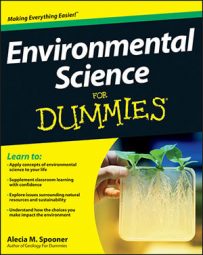One way to reduce poverty and encourage social justice is through microlending. Social justice is the idea that the world has enough resources to meet the needs of everyone but that financial inequality and unequal resource distribution result in hunger, poverty, violence, and environmental damage. Many environmental scientists believe in social justice. Social justice advocates that the earth’s resources be managed in a way that provides for everyone’s basic needs.
As the human population grows and nations continue to seek increased wealth, considering how earth’s resources are cared for and conserved for future generations becomes even more important. Preindustrial nations, where many of the poorest people live, can learn from the mistakes of more developed nations. Lifting people out of poverty through sustainable development is a powerful way to create a brighter future for everyone.
Poverty and the environment are closely linked. Reducing poverty and increasing sustainable development all over the world result in healthier ecosystems and wealthier societies.
Almost 2 billion people live in poverty around the world. People living in extreme poverty don’t have the option of choosing the more sustainable path; they’re struggling each day just to get enough clean water and food. (When economists speak of poverty, they’re referring to people who are unable to meet their basic needs for food, fresh water, and clean living conditions.)
Often, these poorest of the poor are the ones who degrade natural resources through overuse — farming until the soil is completely emptied of nutrients, grazing cattle until no grassland remains, and so on.
Environmental scientists and social scientists realize that improving conditions for people living in poverty improves not only those people’s lives but also their environment. Examples of such simple ways to improve the lives of those living in poverty include the following:
Providing basic education for children
Battling malnutrition and disease
Educating women about family planning to reduce birth rates
Investing in local-scale sustainable infrastructure such as solar-powered energy grids and sustainable agriculture
Increasing human populations, just like populations of other organisms, can put a strain on their environment. More people mean the need for more resources. Educating women and improving health conditions leads to slower population growth. Couple these advances with investing in sustainable infrastructure, and you pave the way for a sustainable and much improved way of life for those struggling to meet basic daily needs.
Social justice is related to environmental justice. Environmental justice means that all people have a right to be equally involved in making decisions about their environment. Advocates of environmental justice work to ensure that poor people and minorities are not disproportionately burdened with pollutants and other environmental damage.
One way to reduce poverty and encourage social justice is through microlending. The idea of microlending is simple: Rather than depend on large investments in national infrastructures to change living conditions for poor people, microlending offers small loans that can be used to make small changes with large impacts.
For example, a woman who sells eggs in a village market can use a microloan to purchase more hens or build a larger henhouse to protect her chickens. The amount of money required for this small improvement is tiny, but it can have dramatic results, bringing more wealth to this woman and her family.
Microlending got started in the 1980s and is still a relatively new concept for many people. Microloans are risky because you’re lending money to people who don’t have the wealth to ensure they’ll pay you back anytime soon.
One reason that microloans are successful is that average people in wealthier, industrialized nations can afford to offer microloans; a minimum loan amount may be $25. Organizations such as Kiva help lenders locate borrowers in need around the world and coordinate loan disbursement and repayment.

